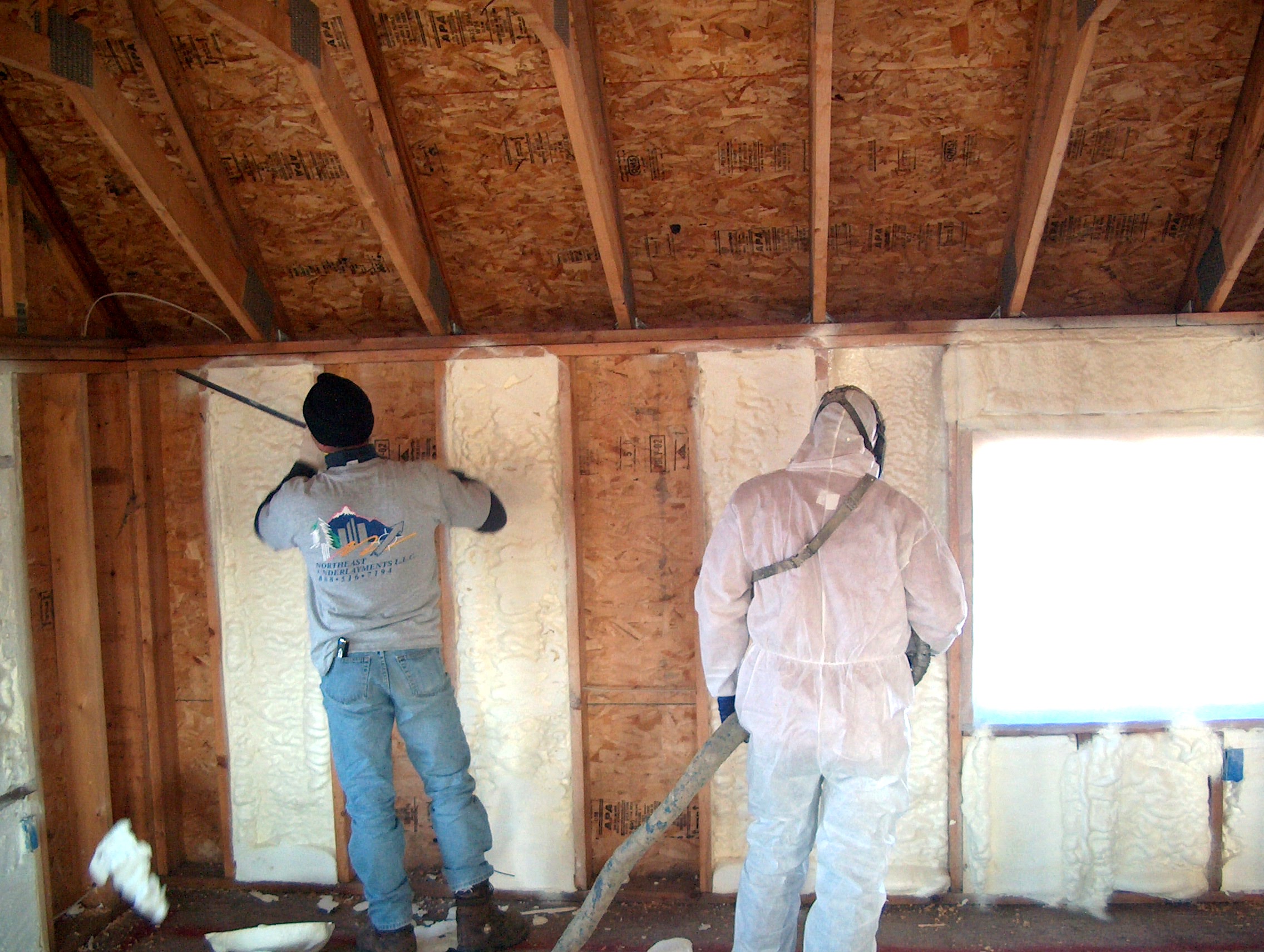
Spray foam insulation has become very popular for new construction, because its high insulation and sealing properties save energy costs over the long run.
By Susan E. Campbell
High performance insulation can make a home or commercial building more comfortable while reducing fuel costs, which is why about 95 percent of new construction utilizes spray foam instead of traditional materials.
“Foam seals up all cracks in the home and is very green,” said Nick Scialdone, CEO of The Foam Guys, LLC of Glens Falls.
The raw material of foam insulation is recycled plastic that will never break down. And commercial builders seeking LEED certification can get the highest possible point value if the product is manufactured within a 500-mile radius of the building site, according to Scialdone. “Foam is not only a natural resource. It is manufactured right at the site,” he said.
The only controversial aspect of foam insulation may be the price. But in the long haul, being green may help keep budgets out of the red. “Foam costs three times more than the traditional fiberglass or cellulose for insulating the same area,” said Douglas Kwazneski, sales representative with Northeast Spray Foam of Warrensburg. “That can put a homeowner’s budget out of whack.”
But, said Kwazneski, clients who often seem least capable of paying the premium are the ones who will find some way because, they say, “they can’t afford not to.” “In a down economy, it’s hard to pay the oil and gas bill,” he said. “So these clients see the efficiency of the home as their priority, rather than the new TV or car.”
Kwazneski said the breakeven point is five years on average. After this period, the home insulated with fiberglass or cellulose, which is made from recycled newspapers, will start incurring more fuel costs to heat and cool the home than the homeowner had saved had they insulated with foam in the first place.
Plus, there is the cost of increased load on the heating and air conditioning systems that are serviced and replaced more frequently with use, he said.
Scialdone said fiberglass is a filter, not an insulator. When the house is heated, the air in it expands and travels through the fiberglass and out the roof. This air is then replaced by air from outside.
“The best way to stop air from leaking is by having a barrier, and foam can do that,” said Kwazneski. “Foam is both an insulator and a barrier.”
Can a house be too tight?
“Never,” said Scialdone. “In a real home (as opposed to the conditions under which product efficiency testing is controlled), people are going in an out, opening windows and garage doors. All day houses breathe.” Scialdone said the reason people have mold is there is too much condensation in the walls, a condition that foam can prevent.
With new housing starts down, many clients are retrofitting their homes. Kwazneski said when his company converts a building to foam, he addresses two key areas: the attic, which is the largest area of air exfiltration, and the basement, the critical area for air infiltration.
“Then everything in the middle works out better,” he said.
There are two kinds of foam insulation, according to Kwazneski: open-cell and closed-cell.
Closed-cell foam has four times the density of open-cell foam, which is soft and flexible and “looks like a marshmallow,” said Scialdone. However, the closed-cell product emits off-gasses, making it a poor choice for chemically sensitive people.
“The closed cells harbor a gas produced during the expansion process and which leaks out during the first six months before it tails off,” said Kwazneski. “There is a bad odor which may or may not be noticeable.” Healthy or not, Kwazneski said the EPA allows this. Fiberglass, by comparison, is heated, blown glass and a known carcinogen. “Walk through a fiberglass insulation plant and ask them what’s in it,” said Scialdone. “You can touch foam insulation, smell it, rub it on your hands or face. Would you do this with fiberglass?”
Foam insulation is now code in Canada, Scialdone said. It is approved in New York for use at schools and health care facilities. But are all foams the same?
Ask the experts. Contact Nick Scialdone at 932-2989 or www.thefoamguysinsulation.com. Douglas Kwazneski can be reached at 623-7010 or www.northeastsprayfoam.com.
